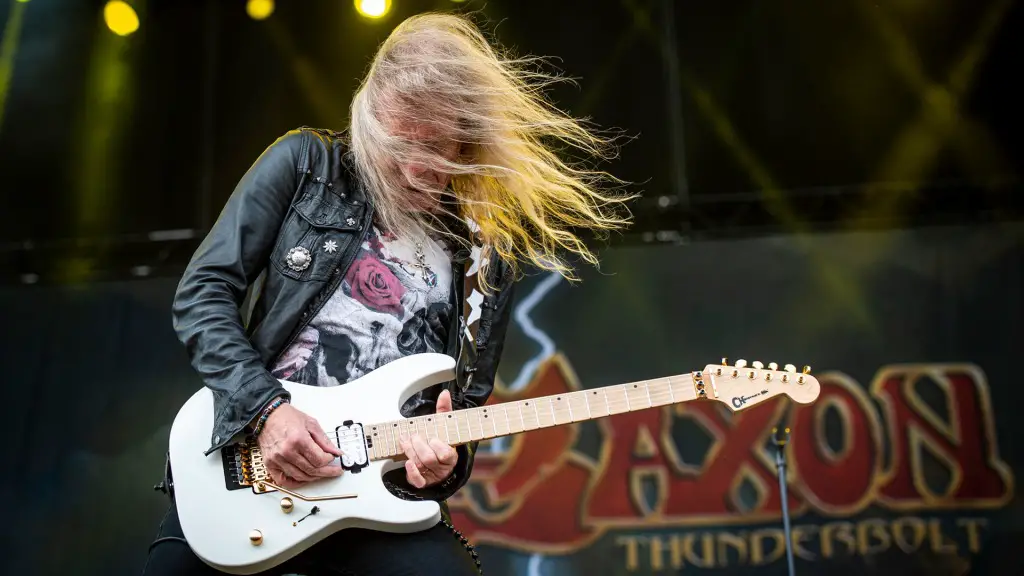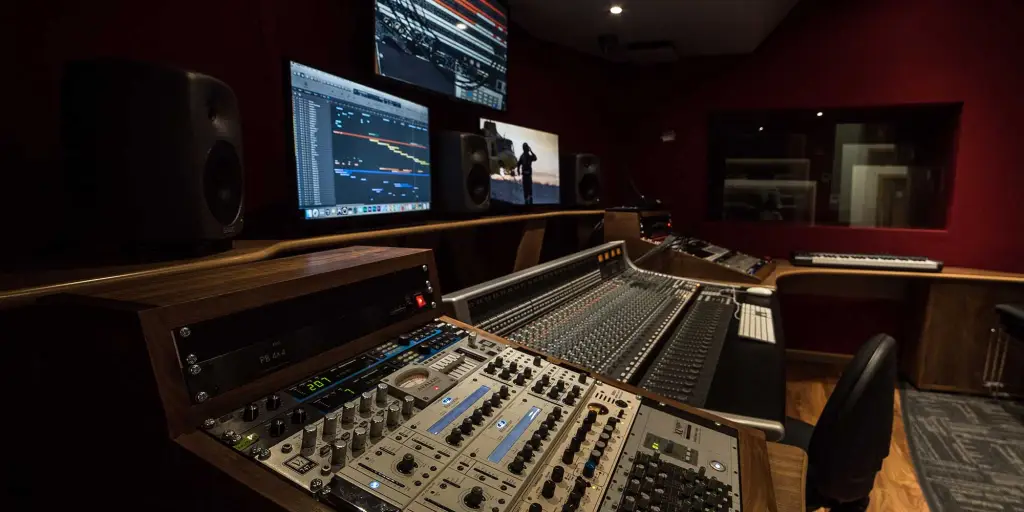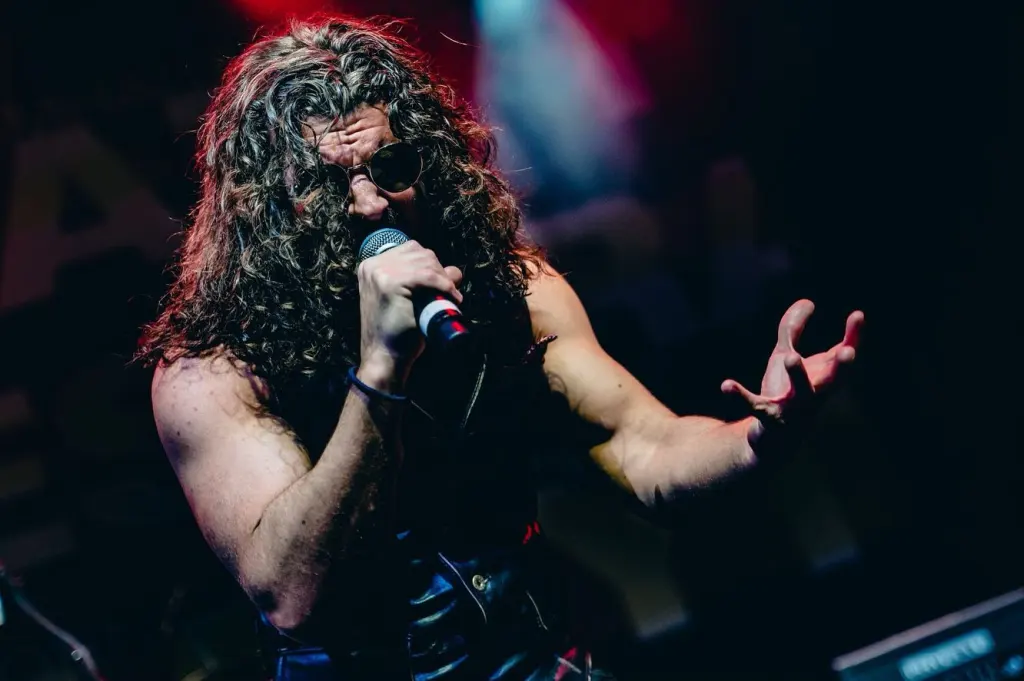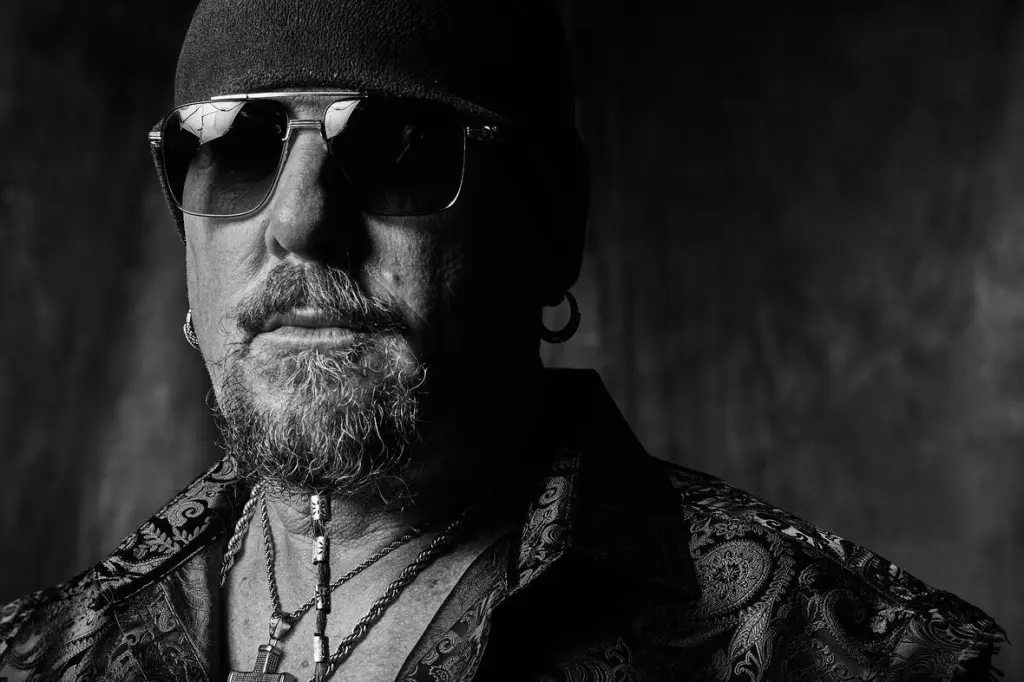Images courtesty of Getty Images/Wiki Commons
Saxon’s long-tenured six-stringer digs into his journey from session player to heavy metal hero.
With a library of over 20 studio albums and countless tours, Saxon has cemented themselves within rock history. Like many bands, they have been through the gauntlet of member changes with its current lineup being the longest running (not accounting for Brian Tatler replacing Paul Quinn for touring) in the band’s history.
To that end, Doug Scarratt joined Saxon in 1995. Scarratt found no issue fitting in, and there was no animosity filling in for Graham Oliver, either. Scarratt brings to the table of a style that melds seamlessly into Quinn’s, bringing blues and rock to Quinn’s metal mastery.
Today, Saxon stands as a force to be reckoned with through a regular touring schedule and continued studio albums. They’ve got no plans to slow down, and seem as vital as ever.
In this interview, we chat with Scarratt about his upbringing, the scene that influenced him as a young player, joining Saxon and beyond.
Why did you pick up the guitar?
When I was about 10 or 12 watching watching Top of the Pops made me think that guitars were cool [laughs]. And once I started to like more music I discovered bands like Procol Harum with Robin Trower. He’s a Stevie Ray Vaughan and Jimi Hendrix kind of style guitar player, and made a name for himself. I heard him, and I thought to myself, “That’s what I want to do; I’m going to get a guitar and see if I can learn to play.”
Do you remember your first guitar?
It was a rubbish Raver from a mail-order catalog, but that’s what set me on the road. My first decent guitar was a Fender Strat copy, which looked like the guitars of my heroes. As soon as I got my hands on one of those, the others disappeared.
What was the East Sussex music scene like growing up?
When I was young, a bunch of friends and I were massive fans of a The Old Grey Whistle Test, hosted by Bob Harris, who loved rock. The show had soul, reggae, rock and more. It was a cross-section of music, but it was rock/guitar oriented, so I discovered a lot of bands through that show.
And from there?
In Brighton, there is a famous venue called The Dome, and we’d just go there often. We see anything from David Bowie, Weather Report, and even Pink Floyd, back when they did their first Dark Side of the Moon tour. The music scene for the bigger bands was amazing, but I was just a kid trying to learn how to play, so there were tons of inspiration, too. But ultimately, my roots come from some of the more obvious bands, like Deep Purple and Led Zeppelin. I also couldn’t resist ’70s funk.
Befound joining Saxon, you were a session player, right? Which sessions stand out most?
Some might see my session career as a bit embarrassing, I suppose. At the time I was doing anything for money and I worked with songwriters that had a studio here where they were demoing for different artists. I played on David Hasselhoff’s album and one of the songs was on Baywatch for weeks. There’s a ballad and also quite a big guitar solo on it. There were loads of things I was working on, one with one of the girls from Janet Jackson’s dance troupe that was making an album. I was in a cover band for a club here playing three nights a week that was playing anything chic and cool at the time, just fun music, really.

Image courtesy of Getty Images/Wiki Commons
How did you end up joining Saxon?
I played in a local blues band and Nigel [Glokler] was in a jazz-rock cover band. So, we lived in the same town, got to know each other, and this band I was in covered lots of songs, like Nigel’s did.. We had different drummers, and there were times when we would have Nigel playing with us. One night, we were drinking and talking, and we discovered we were into a lot the same bands and became friends. From there, we started jamming together, and one day, he phoned me, saying, “We’re having issues with Graham [Oliver], and we’re going to sack him. Are you interested in the gig?” Obviously, I was.
What were your first impressions of Biff Byford?
He’s a big character, you know when he’s in the room. My first impressions were kind of what I expected, really. He’s got a very strong presence, always has. When I got hired he said, “I’ll give you the job then, but, I’ll probably fucking regret it.”. I’m sure he said that. He says he didn’t, but I’m sure he did [laughs].
Do you remember the sequence of events leading up to your first tour?
There was an audition, but Nigel recommended me. So, Paul [Quinn] came down, and we were set up in this large country house that some friends had with a music room. They sent me a bunch of Saxon CDs and I learned to play the songs, but it was fine as I had a couple of weeks before their tour. I was able to play about 90% of the songs just from listening to these CDs, but I needed some guidance to make sure I was doing everything correctly. I literally had one rehearsal with the full band before the first show in Munich, Germany [laughs].
How did your first show go with only the one rehearsal?
It was extremely stressful. I didn’t know anybody except for Nigel. I was the new guy, but had pretty much met everyone on the tour bus. It was quite a long tour as well at seven weeks. So, I left home with a couple of guitars and my big rack of gear and off we went.
What was the hardest part?
The first few weeks were I think the hardest thing. But one of the hardest things was I had been mainly a session player, and had been playing smaller venues. So, suddenly, I was going from that into a high-profile gig, which was a learning curve. There was lots of different information coming from the members and manager at the time like, “You need to be doing this, you need to look like this.”
When did you finally feel like a member of the band?
After that first tour, we made a live album, which was pretty scary. But once we started to write together, I felt like a member of the band. And then, about a year later, I was actually working on co-writing an album and recording, at which point I was going to be judged by our fans because it was my first album.
Did you have any difficulties replacing Graham Oliver?
I tried not to think about it. When I first started doing shows with Saxon, there were a lot of people that only loved the first three albums and the original lineup. But Unleash the Beast was well-loved, and that being my first album with Saxon, was a positive thing, so there was hardly and negative comments of me replacing Graham.
How do you differ from Graham?
Graham and I are very different types of players. I didn’t want to copy his style. I wanted to make a name for myself and do my own thing. I love improvising, even if it means flying by the seat of my pants and fucking up sometimes [laughs]. For me, that’s the exciting bit of the game.

Image courtesy of Getty Images/Wiki Commons
As you said, Unleash the Beast was your first studio album with Saxon. What were your specific contributions?
I had quite a large part in all of the tracks. We’re all in the same room throwing ideas around, so pretty much everyone had a say in each song. I think the riff in “The Thin Red Line” was mine, as well as the riff in “Circle of Light.” I think most of that track was me. But having said that everyone’s throwing stuff around. And I had a riff in “Cut out the Disease,” although the main riff at the beginning was Nigel, working with what he had come up with on the keyboard. I then transposed it from keyboard to guitar. The way he played the keyboard was not doable on guitar, so we found a way around it.
Lionheart was considered a return to form for Saxon. Would you agree?
For me, Lionheart was probably when I was at my creative peak. I had written basically all of the riffs for the song “Lionheart.” Paul came and stayed with me for a few days, and Nigel still wasn’t in the band, but we went around to Nigel’s and recorded some demos for “Witchfinder General” with him.
We wrote three tracks that night, Nigel, Paul and I, which ended up manifesting as “Witchfinder General,” “Searching for Atlantis,” and “Justice.” We had a lot fun because we had Nigel double the guitar riffs with double bass drums, so there was a more modern syncopated riffs, particularly in “Justice.” Those were the days where you could still afford to be in a studio. It’s not so easy to do that now
How do you and Paul Quinn find balance in songwriting, riffs, and soloing?
We’ve got fairly different styles, but we do sometimes morph into each other. But we’ve been playing together for a long time, and I can only speak for myself, but I think Paul feels the same that there’s enough room for both of us and neither of us are particularly egocentric. There’s no friction between us. We split solos, or even share them, making things more interesting. Becuase sometimes, you want the solo to stay in the vein of whoever’s performing it. So, we don’t split them all, but we do split quite a lot of them.
The current incarnation of Saxon is the band’s longest running. What’s the secret?
Creativity. We’re musicians, and we want to keep creating new and fresh stuff. It would get old and stunt our creativity if we just played the hits live all the time. We play the new stuff just as much as the old. The hits definitely come to life with a great crowd but our new songs get just as much love from us and the fans.
What’s next for you and the band?
More Inspirations is finished and out now, and we are starting to write new riffs, and will continue to do what we do. We’re already talking about working on new material, so over the next few months I would imagine we’ll wbe writing. And there will be more touring. As long as we can keep on doing that, we will.
Dig this? Check out the full archives of A.M. Radio, by Anthony Montalbano, here: https://vinylwritermusic.wordpress.com/a-m-radio-archives/





Leave a Reply